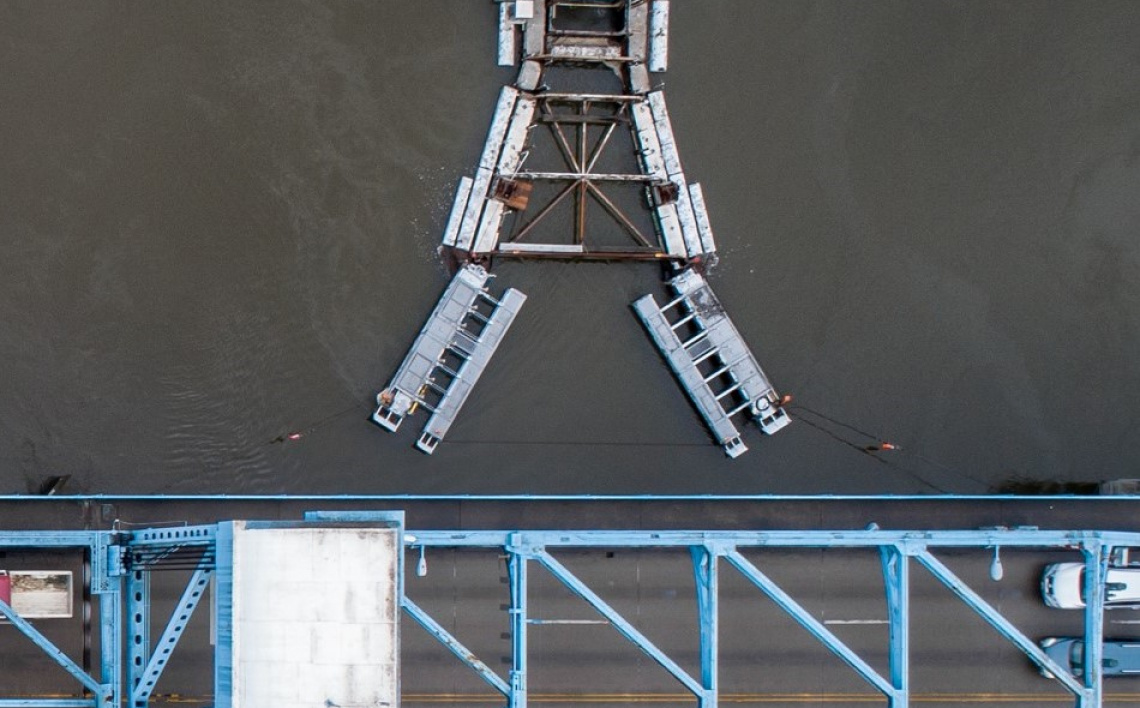By Scott Putnam, Fisheries Regional Biologist, Idaho Fish and Game
Monday, February 22, 2021 – 5:12 PM MST
What does a large fish trap attached to a main highway bridge have to do with wild salmon and steelhead migration?
Each late winter, a Fish and Game crew prepares and constructs a nearly 100-foot long fish trap. They tow it from a storage facility downstream of Clarkston, WA to the Highway 12 (“Blue”) Bridge that spans the Snake River between Lewiston, ID and Clarkston, WA. This ritual began at this site in 1984 and continues to this day. Check it out if you are in the area!
The trap operates from late-winter through spring in most years. While the trap is being moved upstream for installation, crew members prepare the heavy cables to secure the trap to the bridge. The barge operator carefully eases it into place as the cables are connected. A large extension cord is connected to provide electricity for the trap. Finally, a wireless network connection is turned on to monitor the trap and manage operations.
This fish trap samples a variety of fish species including juvenile salmonids and some warm water species. The focus of the project is to tag and count juvenile Chinook salmon and steelhead trout, known as smolts. Fish that are tagged are then monitored during their downstream migration to the ocean and passage through the Snake River and Columbia River dams. Some of the information we gain from this project is estimating survival of these fish as they navigate dams or as they are being transported through barging.
Fish and Game and the Fish Passage Center cooperatively operate this fish trap as a key component of the Smolt Monitoring Program and the Comparative Survival Study. More information about these important wild salmon and steelhead trout projects is available at https://www.fpc.org/fpc_homepage.php


